Question
Question one. Chepa's utility function is given by U (x, y) = ln x + 4 ln y. Assume that Chepa has endowments (10, 10)
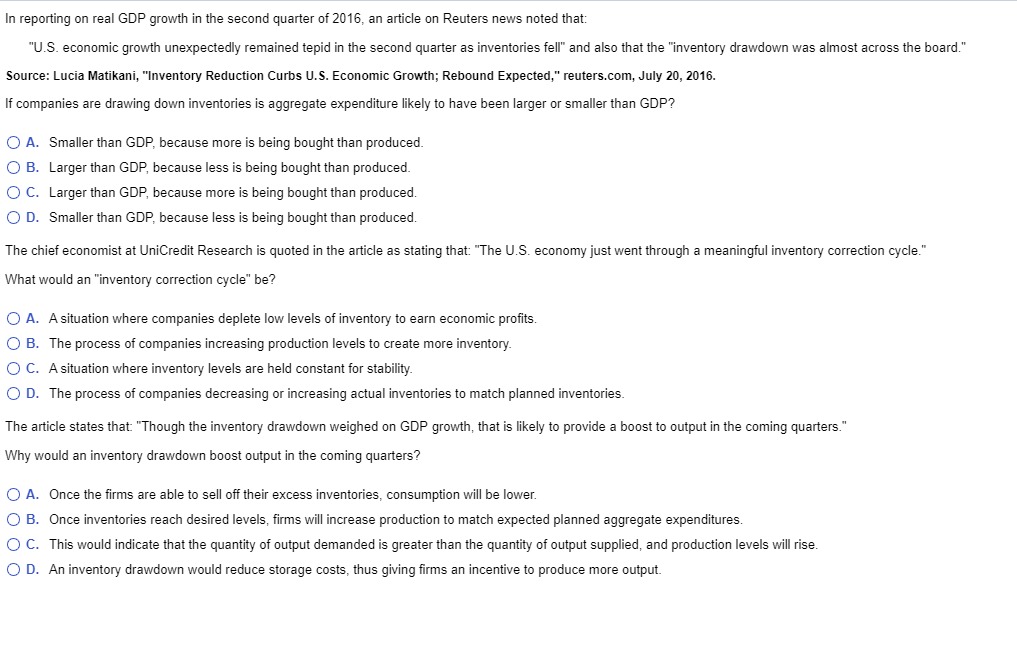
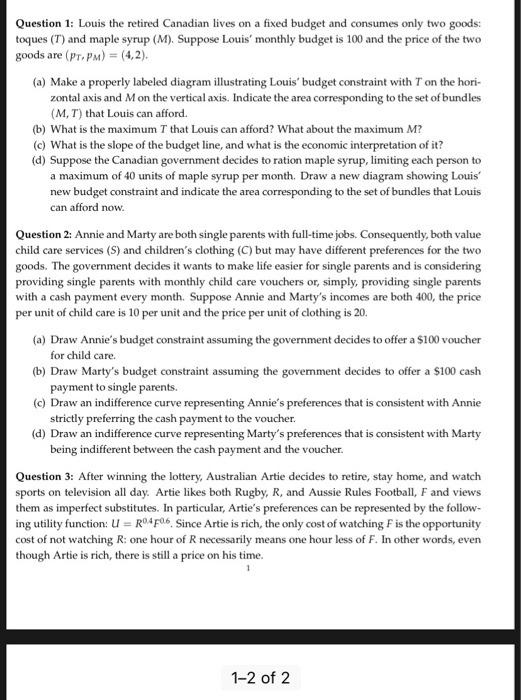
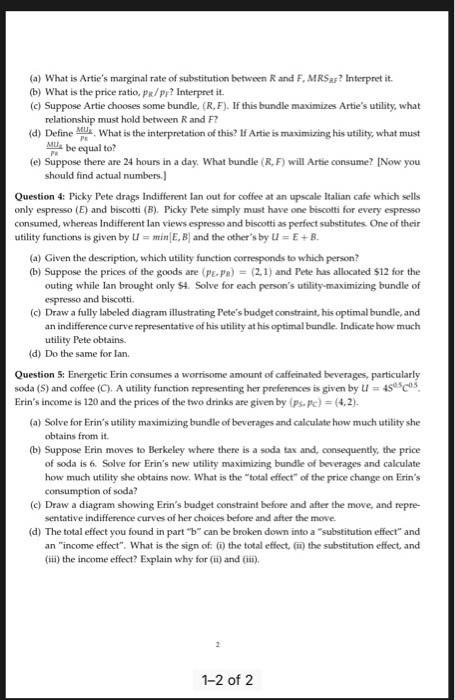
Question one.
Chepa's utility function is given by U (x, y) = ln x + 4 ln y. Assume that Chepa has endowments (10, 10) and that Py = 10 throughout the problem.
I need help with questions G) and H) only please.
a) (Note: this part of the question is intended to reduce your workload for parts (b) to (e). If you prefer not to work with a general demand function but calculate the demand separately for each of the cases, you can do part after part (f).) Given Py = 10, solve for the optimal bundle for Chepa as a function of Px and money income M.
(b) Suppose Px = 10. Calculate Chepa's endowment income. How much of each good will Chepa consume? Call this bundle A.
(c) Now suppose Px drops to 5. Calculate Chepa's new endowment income. Find Chepa's new consumption bundle. Call this bundle B.
(d) What is the income required such that Chepa can just afford bundle A under the new prices? Find Chepa's consumption bundle if she has this income and is facing the new prices. Call this bundle H1.
(e) Find Chepa's consumption bundle if she has her original endowment income and is facing the new prices. Call this bundle H2.
(f) Using your answers from (b) to (e), calculate the substitution effect, ordinary income effect, endowment income effect and the price effect associated with the change in Px.
(g) Express Chepa's endowment income as a function of Px. Using this expression and your answer to (a), find the range of values of Px such that Chepa will be a net seller of good x.
(h) This part of the question is to investigate Chepa's welfare under different prices. We will do it step by step.
(i) By substituting out the M with the expression of Chepa's endowment income (see part (g)), obtain Chepa's gross demands as functions of Px.
(ii) Plug your answer to (i) into Chepa's utility function (that is, replacing the general x and y in her utility function by the optimal x and y given Px) to obtain an expression of the maximal utility achieved by Chepa as a function of Px.
(iii) Find the value of Px that gives Chepa the lowest utility. (Hint: Take the answer to (ii), differentiate it with respect to Px, set the derivative to zero and solve for Px in that equation. It is a good practice to check the second order condition to make sure you are getting a minimum ? but if you feel uninterested or that this is too hard, you can trust that I am giving you a "nicely behaved" minimisation problem and skip checking the SOC.)
(iv) Explain the economic meaning of your result in (iii).
Question 2.
1. Budget sets. Say we have 2 goods, and that the absolute price of good 1 is 10, and of good 2 is 20 (say P = (P1;P2) = (10;20), and income m is 100. a. Dene the consumption set, and then plot the budget set at this P: b. Show the budget set gets "smaller" under set inclusion assuming either component of P increases, or m decreases. c. Show that the imposition of positive sale tax of good 1 (not good 2) has the same impact as a rise in the P1: d. Say the price of good 1 increases from 10 to 20 whenever more than 1 unit of good 1 is purchases. Draw the new budget set, and show its convex. Is it strictly convex? Explain.
2. Preferences. Let denote the consumers preference relation on C =Rn +: Answer the following: a. Sayis reexive, complete, but not transitive. Show that the consumers preferences could "cycle" (i.e., if for j = 1;2;3;:::;n; and consumption bundles xn we could have xj xj1 and x0 xn: b. Say is reexive, complete, and transitive. (i) Can indi?erence curves "cross"? (ii) what additional assumption rules this out. Show also that this assumption indeed does rule out crossing indi?erence curves. (iii) Show the consumer cannot "cycle" (i.a., part (a) cannot happen). (iv) Show that under "strictly monotonic" preferences, indi?erence curves cannot be "thick".
3. Convex Preferences and optimal solutions. Let denote the consumers preference relation on C =Rn +: We say a preference relation is convex (re-spectively, strictly convex) if for any two bundles x and y such that x~y (i.e., x and y indi?erent), then for any 2 [0;1] (respectively, 2 (0;1)), and z = x+(1)y; z x~y (respectively, z x~y): We say a preference relation is continuous if the two sets: weakly less preferred: WLP(x) = fy 2 Cjx y;x 2 Cg and weakly preferred: WP(x) = fy 2 Cjy x; x 2 Cg are "closed" (i.e., contain their boundaries. See discussion in class. Answer the following questions. Let the consumption set be C =Rn +: (a) Show if is convex, WP(x) convex. (b) Show if is strictly convex, WP(x) is strictly convex. (c) Is WLP(x) convex?
Consider a consumer facing a budget set B(p;m) = fx 2 Cjp x mgfor p >> 0: Dene the best choice set X(p:m) = fx 2 Cjx x for allx 2 B(p;m)g (d) Show if is convex, X(p;m) might have many elements (i.e., many optimal choices. (e) Show if is strictly convex, X(p;m) is a unique element.
4. Say we have a utility function u(x) = x 1 x1 2 for 2 (0;1):(a) Construct the Marginal rate of substitution. (b) Discuss how the Marginal rate of substitute in related to the slope of an indi?erence curve at a point x >> 0 (i.e., each component of x is strictly positive).
5. Answer the following: (i) Why is a utility function considered to be an "ordinal" concept? (ii) Show that if u(x) represents a consumers preference relation, any ^ u(x) = 10u(x) represents that same utility function. (iii) In question 4, of show that if u(x1;x2)=x 1 x(1) 2 for 2 (0;1); theMRS between the two goods for ^ u(x) is not impacted by this strictly increasing transformation. (iv) Actually, show if h(y) : R ! R is a strictly increasing continuously di?erentiable transformation, ^ u(x) = h(u(x)) represents that same preferences as u(x). (v) Show in part (iv) that the MRS at the same for both ^ u(x) and u(x): (vi) Show in part (v) that the MRS is the same if (vii) let h(y) = lny: Show the MRS is the same for both ^ u(x) and u(x) if u(x1;x2)=x 1 x(1) 2 for 2 (0;1):
Section B.
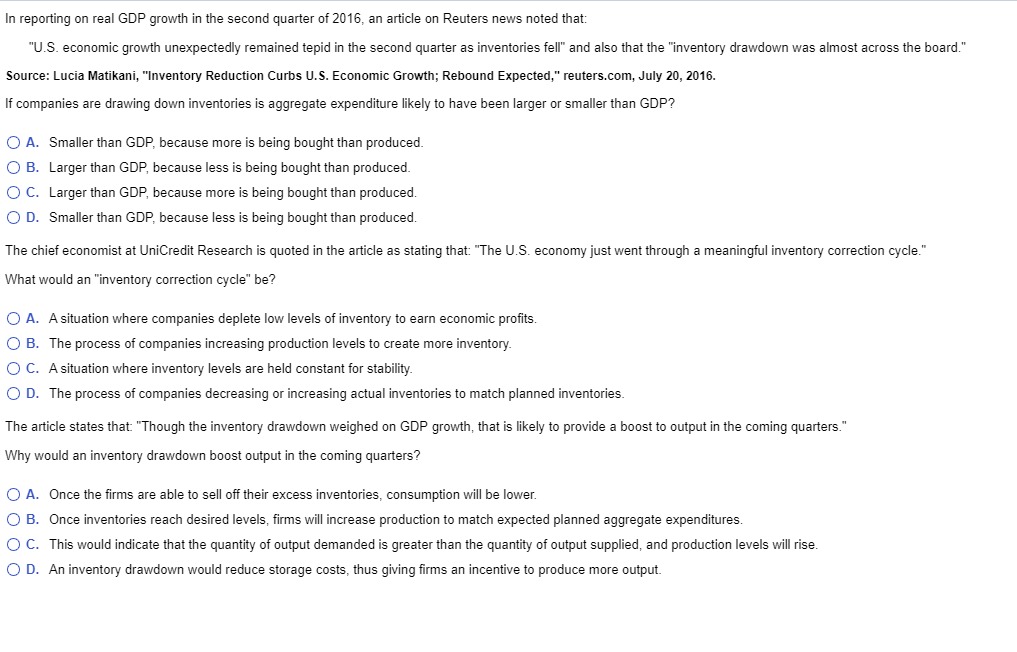
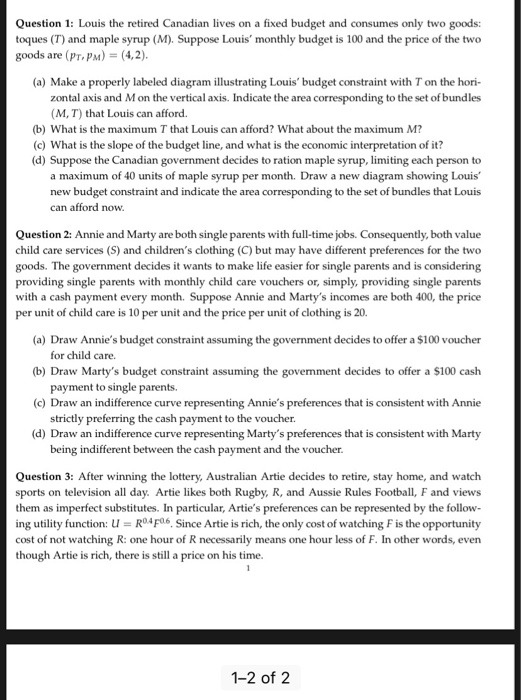
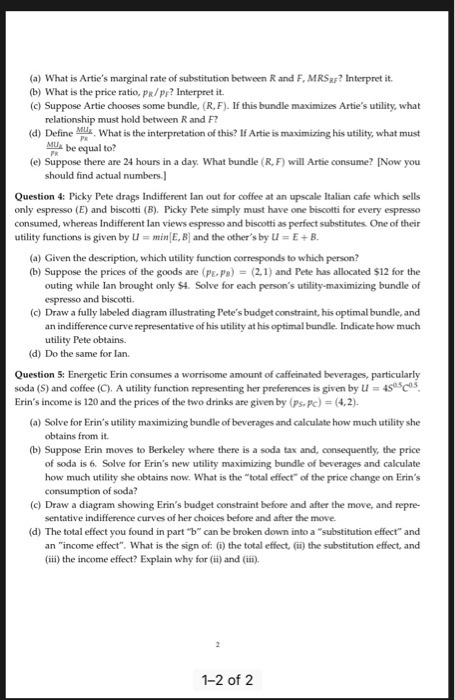
Step by Step Solution
There are 3 Steps involved in it
Step: 1

Get Instant Access to Expert-Tailored Solutions
See step-by-step solutions with expert insights and AI powered tools for academic success
Step: 2

Step: 3

Ace Your Homework with AI
Get the answers you need in no time with our AI-driven, step-by-step assistance
Get Started


